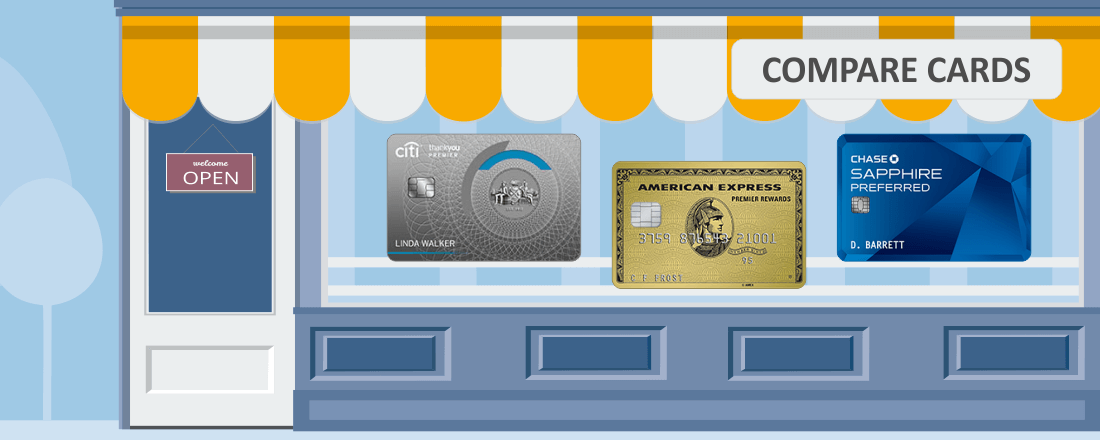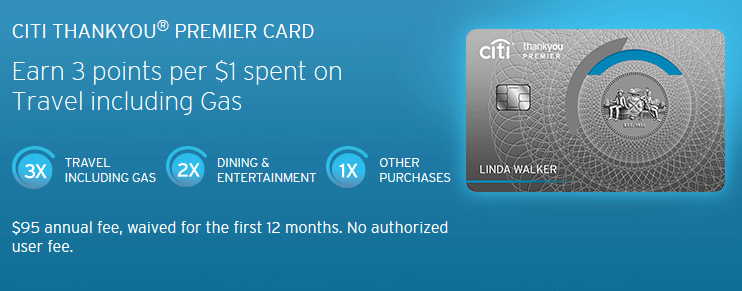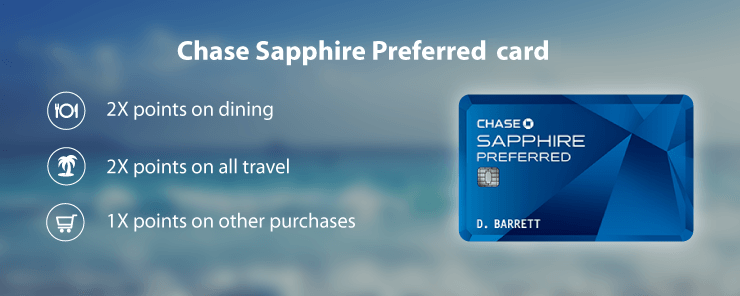
Choosing which travel rewards credit card to apply for can be overwhelming, particularly if you’re just getting into the miles game. Even veterans get confused by all the options sometimes. Let’s take a look at some of the best cards to get into the big travel rewards programs.
There are two major categories of
The problem with those cards is that you can only redeem the miles through one frequent flyer program. All of the miles you earn with your United MileagePlus Explorer card, for example, have to be redeemed through the United MileagePlus program.
Cards that are a part of an issuer’s rewards program, on the other hand, offer a lot more flexibility because they aren’t tied to one airline. It’s important to know that there are two types of credit card travel rewards programs: those that allow you to transfer points to airlines and others that only allow you to use points toward statement credits for travel you’ve purchased.
The former type of rewards program is better because you can get a lot more value for your points by transferring them to a frequent flyer program and then redeeming them for flights. The three big travel rewards programs that allow you to do that are American Express Membership Rewards, Chase Ultimate Rewards and Citi ThankYou Rewards.
So, which program is best and which card should you get? To a certain degree that comes down to you. You have to figure out where you want to go and which rewards program is best for getting you there. Each program has different airlines partners. Amex Membership Rewards has the most options with 17 partners, whereas Citi ThankYou has 12 and Chase Ultimate Rewards has six.
Each program offers a lot of flexibility in terms of who you can redeem points with and where they can get you, but if you have a specific flight or airline in mind, it’s a good idea to do some research first to figure out which program will work for you.
You’ll also want to think about your spending habits. The better cards offer bonus points in certain categories of purchases. You’ll want to get a card that gives you more points for the types of things you buy often.
Below is a roundup of the best introductory cards to get into each program.
Citi ThankYou
Citi ThankYou Premier is the card to get if you’re interested in the ThankYou Rewards program. It has a reasonable $95 annual fee, a 40,000-point sign-up bonus and great bonus earning categories on purchases. The annual fee is even waived for the first year, so if you decide that the ThankYou program isn’t a good fit, you can cancel the card without spending a dime.

You have to spend $3,000 within the first three months of having the card in order to get the sign-up bonus. Once you do, you can transfer those 40,000 points to one of twelve airlines: Cathay Pacific, Qatar, Qantas, Eva Air, Etihad, Air France/KLM, Garuda Indonesia, Malaysia Airlines, Singapore Airlines, Thai Airways, Virgin America and Virgin Atlantic.
Though its lineup does not include any major U.S. carriers, ThankYou is partnered with at least one airline in each of the three big alliances. While that guarantees that you’ll be able to get anywhere in the world, booking through a smaller foreign carrier may result in less award seat availability and the redemption rates might be higher.
The 40,000-point sign-up bonus may be enough to get you where you’re going, but if it isn’t, you’ll be able to earn more points quickly thanks to the card’s generous bonus earning categories. You’ll get triple miles on all travel purchases, including airfare, car rentals, gas and mass transit, as well as double points for dining out and entertainment. All other purchases earn one point per dollar.
If you can’t find a flight through ThankYou’s airline partners, you can always purchase tickets through the ThankYou online travel center. If you do buy through the travel center, you’ll get 25 percent bonus points.
Citi offers two other cards in the ThankYou program, but they aren’t as good. The no-fee ThankYou Preferred card seems promising on first glance, but it doesn’t allow you transfer points to airlines. And the ThankYou Prestige card offers some nice perks, like airport lounge access and airline fee credits, but it also comes with a hefty $450 price tag.
Chase Ultimate Rewards
There are two cards you should consider if you’re thinking about getting into the Ultimate Rewards program: Sapphire Preferred and Ink Plus Business.

Sapphire Preferred is the perennial favorite among frequent flyers, and it’s your best choice if you don’t qualify for a business card. With its 50,000-point sign-up bonus and reasonable $95 annual fee that’s waived for the first year, it’s a great card. It also offers double points for travel purchases, which includes everything from airfare and car rentals to gas and taxis, as well as for dining out.
The Ink Plus Business card has the same annual fee, but it has a slightly higher sign-up bonus of 60,000 points and it offers a fantastic quintuple points for office supplies, cell phones, landlines, internet and cable. You’ll also get double points for gas and hotels. While you may not spend that much on office supplies, most of us have monthly phone, internet and T.V. bills. That can add up fast.

Both of these cards allow you to transfer points to any of the six airlines that partner with the Ultimate Rewards program, including United, British Airways, Southwest Airlines, Virgin Atlantic, Korean Air and Singapore Airlines. That might not seem like a lot of partners, but Chase chose its partners wisely. Not only is there at least one airline in each of the three major alliances, but United is a major U.S. carrier and Southwest is the largest low-cost airline in the world.
If you can’t find a flight through those partners, you can also purchase tickets on any airline through the Ultimate Rewards online travel center. Though you typically won’t get as much value for your points when redeeming through a travel center, Chase softens the blow by giving you a 20 percent discount if you have either the Sapphire or Ink Plus Business card.
Chase offers two additional personal cards that are great additions to either (or both) of the above cards. The Freedom and Freedom Unlimited cards have excellent earning potential and no annual fee.
Freedom gives you five points per dollar spent in quarterly rotating categories, such as gas, hotels and specific retailers, and the Freedom Unlimited card gives you 1.5 points for all purchases. Unfortunately you can’t transfer points to airlines with those cards unless you also have the Sapphire or Ink Plus card.
American Express Membership Rewards
Membership Rewards may be the most complicated program to get into simply because of the number of cards American Express offers. They have six personal cards (not counting the mythical Centurion card) and three business cards. The minutia of all these different cards can be overwhelming, particularly if you’re new to the program.
You can break the cards up into categories based on their annual fees. There’s one no-fee card, three that charge $95, three that range between $160 and $195, and two premium cards that cost $450. On top of that, some of the annual fees are waived for the first year, and others are not. Your choice of card may depend on how much you’re willing to spend.
If you don’t want to pay an annual fee, the EveryDay card is a solid choice. It comes with a 10,000-point sign-up bonus and you’ll earn double miles on groceries, something most of us purchase regularly.
If you’re willing to step up to a $95-a-year card, the EveryDay Preferred card is a bit better. You’ll get a slightly bigger sign-up bonus of 15,000 points, plus triple points on groceries and double points for gas. The annual fee is not waived for the first year, though.
Stepping up to a midrange card gives you even better options. Both the Premier Rewards Gold card and Business Gold Rewards card are good choices. Their fees are $195 and $175, respectively, and they are waived for the first year. With these cards, you’ll get a bigger 25,000-point sign-up bonus plus more generous earning categories.

With the Premier Rewards Gold card, you get triple points for airfare, and double points at restaurants, gas stations and supermarkets. You also get a $100 credit for airline fees, which includes checked bags and change fees.
The Business Gold Rewards card is a bit different. You can choose one of five categories to earn triple points, and the rest will earn double. The categories are airfare, advertising, gas, shipping and computer equipment.
The other cards in Amex’s lineup either charge too much or offer too little to make sense for an introductory card to the program. The Premier Rewards Gold card and Green cards, for instance, don’t come with a sign-up bonus, and while both the personal and business versions of the Platinum cards have some nice perks, neither offers any bonus earning categories. Plus they come with a $450 annual fee that is not waived for the first year.
One nice thing about Amex is that all of its Membership Rewards cards allow you to transfer points to any of its 17 airline partners, including Delta, Hawaiian Airlines, JetBlue, Virgin America, Virgin Atlantic, British Airways, Air France/KLM, Alitalia, Aeromexico, Air Canada, ANA, Cathay Pacific, Emirates, Etihad, Singapore Airlines, El Al, and Iberia.
Final Picks
To sum up, if I were to pick one card from each rewards program they would be the Citi ThankYou Premier, Chase Sapphire Preferred and the Amex Premier Rewards Gold card. All three come with decent sign-up bonuses, good earning potential and reasonable annual fees. Those annual fees are waived for the first year, too.
